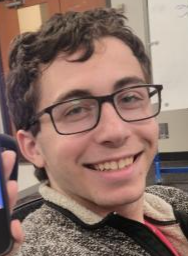
Summer Researcher with Dr. Zubaer Hossain
Mechanical Engineering, Mathematics
University of Delaware
Mark’s Research Summary:
This Summer, my research was focused on testing and understanding how to improve fiber-reinforced composite by making its fibers architecture follow trigonometric functions.
Additionally, the interface between the fibers and the matrix would be tested to understand how the force of gravity affects the interface strength in polymer-based fiber-reinforced composites.
At first, my focus was understanding how materials creation and function change depending on the gravitational field acting upon the material. I read research papers from NASA and other space organizations that outlined the 3D printing process in space and how material properties differ in a microgravity environment. I analyzed the gravity simulating 3D printers that have been used in space thus far, material reprocessing in space, and how material strength could be compromised for material usage in space due to the lack of a gravitational force.
After developing an understanding of the differing conditions of materials in space applications, I focused on researching how changing the direction of gravitational fields and their strength would affect fiber reinforced composites of differing shape.
I was recommended by Professor Zubaer to use Coreform CUBIT to model the composite and its fibers. The software isn’t taught in the mechanical engineering curriculum, so I spent time learning with tutorials and other members of the NASA Space Grant Program how
to use CUBIT and how to create meshes.
Using CUBIT, I created a .jou script that would model a matrix, interface, and fiber system molded after a given trigonometric function following the equation: y = a cos(b x) + c sin(d x), with the variables a, b, c, and d being modified by user inputs. With the code, the goal was to create an easily modifiable trigonometric fiber shape. The code and an example model created can be seen in Figure 1.
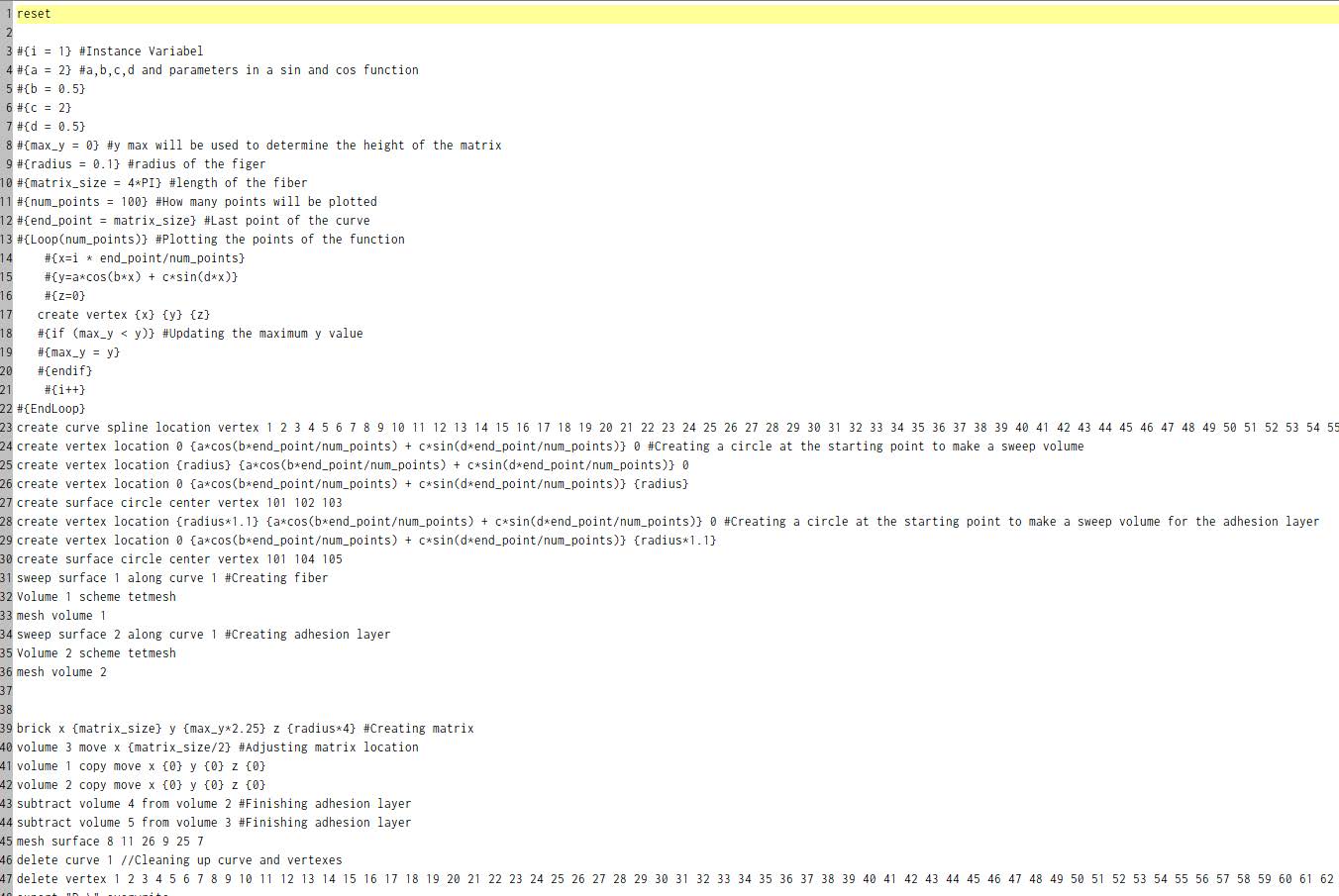
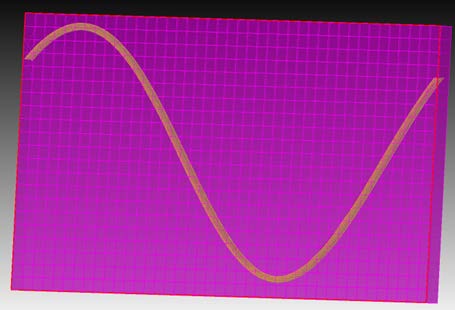
Figure 1: Image of the jou code used to model trigonometric equations in CUBIT (above). Image (below) of code output in “transparent mode” using the parameters a = 2, b = 0.5, c = 2, d =0.5, radius = 0.1, and matrix size = 4π.
After this, I took the models created using the listed script and imported them into SOLIDWORKs and ran a finite element analysis with gravitational fields in the x, y, and z direction in 3 different scenarios. In each scenario, the areas of critical stress were located and the strength of the interface layer were analyzed. An example scenario can be seen in Figure 2.
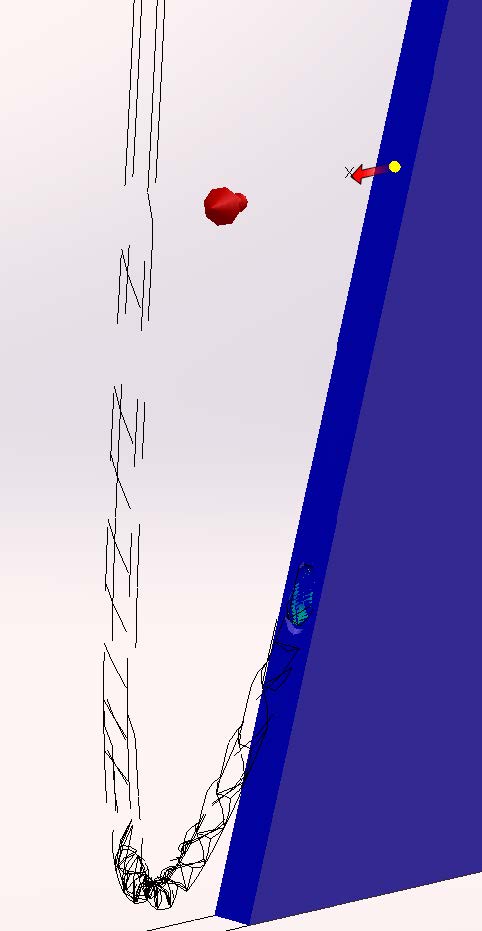
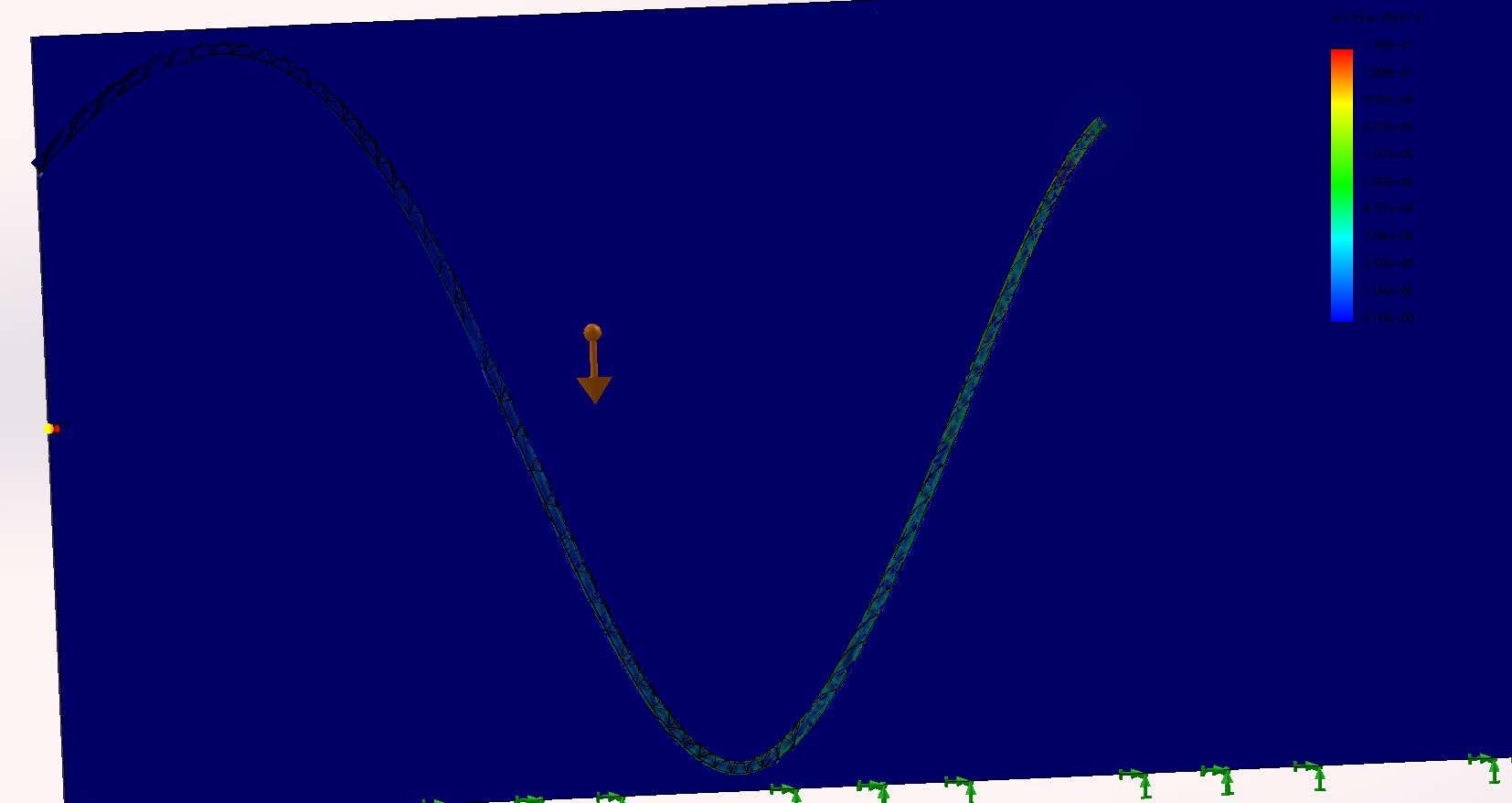
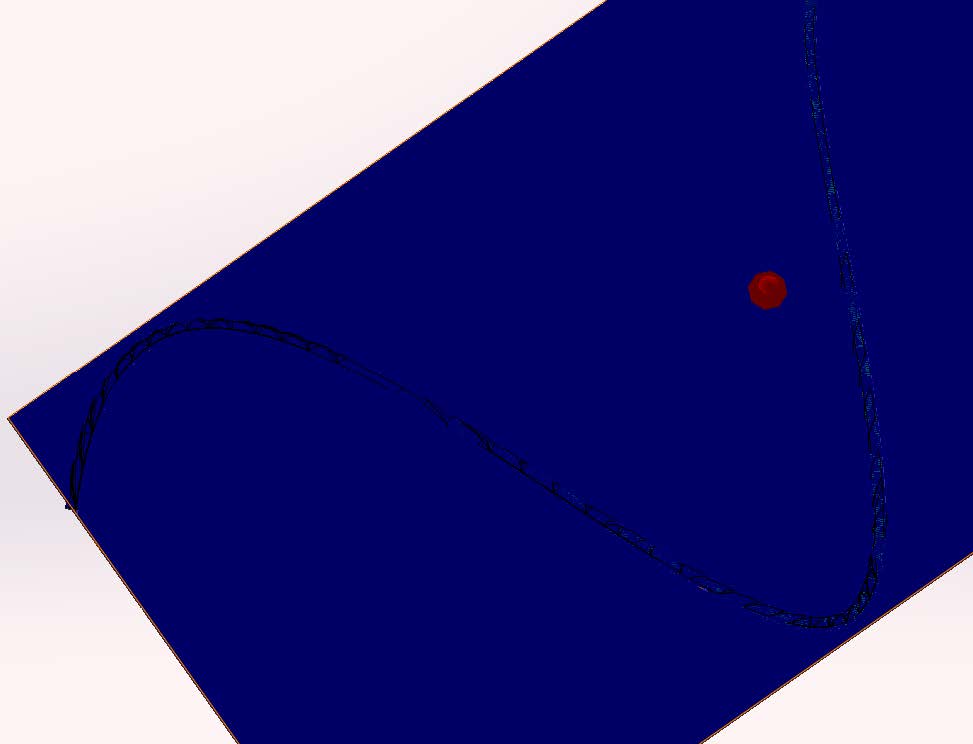
Figure 2: Images of three finite element analysis conducted in the x (top), y (middle), and z (bottom) directions. In all cases, the equation of the fiber followed y = 2 cos(0.5x) + 2 sin(0.5x). Silicon was used as the interface, steel was used as the fiber, and plastic was used as the
matrix.
In these scenarios, the areas of critical stress could be found in the lower dips of the fiber’s wave (if gravity is pointing “down”). And in the wave, the section that received maximum stress was the steel fiber, not the silicon interface. Changing the materials and the amount of fibers in a given test would change the results of the tests as material functions and geometry slightly differ. The materials chosen were taken from the SOLIDWORK’s materials library and
were used as examples of generic matrix, interface, and fiber materials.
For the next steps of this research, a more advanced model creating the fiber geometry is the next logical step. This would mean accepting a wide range of functions outside of a series of sines and cosines. Then, finding a method to merge multiple fiber strands into a much larger and multidirectional composite as would be seen in a final material creation. This would need to be done by a researcher with a material science background or by myself after having taken
more courses in the subject matter (For example, I am taking Materials Engineering this semester).
Through this program, I have been able to develop my understanding of composite materials, learn new softwares such as CUBIT, and to expand my knowledge of SOLIDWORKS finite element analysis.

